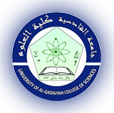Document Type
Original Study
Abstract
Objectives: Diarrhea is the leading infectious cause of childhood morbidity and mortality. Among bacterial agents, diarrheagenic Escherichia coli (DEC) is the major causal agent of childhood diarrhea in developing countries, particularly in children under the age of 5 years. Here, we performed a hospital-based prospective study to explore the pathotype distribution, epidemiological characteristics and antibiotic resistance patterns of DEC from < 5-year-old diarrheal children.
Methods: Stool samples were collected for 100 children suffering from gastroenteritis, and the bacterial species infecting the children were diagnosed using the Vitek2 compact system, sensitivity test, DNA extracted and Polymerase chain reaction (PCR) was performed , in addition to a and Serological test of isolated E.coli
Results: In total, 100 samples were collected from children suffering from bacterial enteritis, and It was diagnosed by biochemical test and the Vitek2 compact and Escherichia coli was the most common of the diagnosed bacteria With a percentage of 62% , as it showed resistance to Ceftazidime (50%), nalidixic acid (25%),and amikacin (30%) , Azithromycin(20%) ,vancomycin(16%) . Imipenem was found (8%). PCR was performed and results were obtained no results to ( LT eltB1, STp estA1 ,STh estA2–4 , ST1, LT1) . the results of Serological test of isolated E. coli were of the isolates for children younger than two years, 8 out of 20 isolates were Enteropathogenic E. coli.
Conclusions: The presented research displayed the bacterium under consideration (Escherichia coli) has a higher resistance rate to the commonly antibiotics used for bacterial gastroenteritis.
Recommended Citation
Al-Omar, Fatima Sabri and Mutlk, Saad T.
(2024)
"Molecular study of Escherichia coli bacteria isolated from stool samples of children less than 5 years old in Anbar Governorate,"
Al-Qadisiyah Journal of Pure Science: Vol. 29
:
No.
1
, Article 21.
Available at:
https://doi.org/10.29350/2411-3514.1258
Creative Commons License

This work is licensed under a Creative Commons Attribution-NonCommercial-No Derivative Works 4.0 International License.










